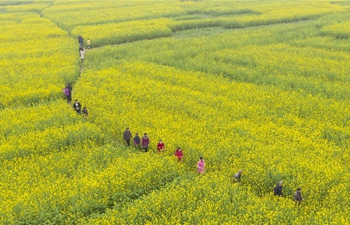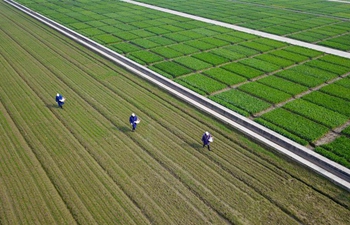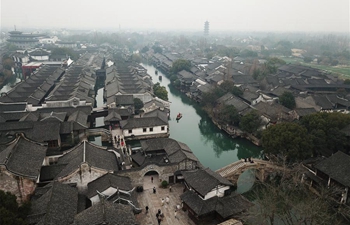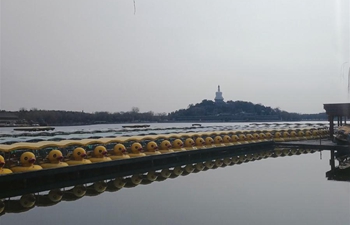NANJING, March 1 (Xinhua) -- The four-month fishing ban, aiming to protect aquatic resources and biodiversity in China's rivers, started Friday.
The annual ban, from March 1 to June 30, will cover the main streams, tributaries and lakes along major rivers including the Yangtze and Pearl rivers.
The Department of Agriculture and Rural Affairs of east China's Jiangsu Province, working with relevant departments, launched a series of enforcement actions Friday.
Nearly 30 vessels will inspect Jiangsu's main streams for at least 10 days.
Zhang Jianjun, deputy director-general of the provincial agriculture and rural affairs department said that over 60,000-meter-long illegal netting tools have been cleared up, and 405 people violating fishing regulations have been penalized over the past three years.
Ni Zhimin, a fisherman in Hangzhou, the capital of eastern Zhejiang Province, sells the fresh fish he catches in the Qiantang River every day. Ni fished for the last time on Thursday and will wait for four months, like other fishermen, until the ban is over.
The Qiantang River is the largest river in Zhejiang and is known for having the world's largest tidal bore. It accommodates over 85 percent of the freshwater fish species in the province.
However, fish species in the river declined from 149 in the 1970s to 122 in 2019.
From Friday, the entire river basin of the Qiantang River has imposed the fishing ban for the first time. During this period, all forms of fishing activities are banned, except recreational fishing.
The agricultural department and procuratorates in Fujian Province launched a series of fishing ban promotional activities in fishing villages across the province earlier on Feb. 22.
The provincial department of ocean and fisheries said a fishing ban has been imposed on the Minjiang River, a major river in Fujian. Fishing activities for research purposes must be approved by local fishery departments.
Fishery authorities of southwestern China's Guangxi Zhuang Autonomous Region said Friday that around 15,000 fishing boats and 30,000 fishermen in the region would be affected by the fishing ban this year.
On the first day of the ban, more than 300 people and over 50 vessels were dispatched to participate in a law enforcement campaign on rivers in Guangxi. So far, an unlicensed fishing boat has been captured, and illegal netting and cages have also been discovered.
For those whose livelihood will be affected by the fishing ban, the local government is planning to provide subsidies for them, according to Dong Xiaogang, a local fishery department official.
In eastern Anhui Province, fishery departments are trying to turn local fishermen into protectors of aquatic resources during the fishing ban period, encouraging them to play an important role in the protection of the ecological environment along the Yangtze River and help ease the problem of law enforcement officer shortage.
In Chaohu Lake -- one of China's five largest freshwater lakes -- mostly situated in the city of Hefei, capital of Anhui, the fishing ban was imposed one month earlier on Feb. 1 due to different fish life cycles, according to Anhui's fishery authorities.
A total of 26,000 kg of fish fry and 7,500 kg of young crabs were poured in Poyang Lake on Friday. Poyang Lake, located in east China's Jiangxi Province, is China's largest freshwater lake.
To further improve the ecological environment, all aquatic life conservation areas in Jiangxi banned fishing this year, and the section of the Yangtze River in the province and Poyang Lake will ban fishing all year starting in 2020.

















